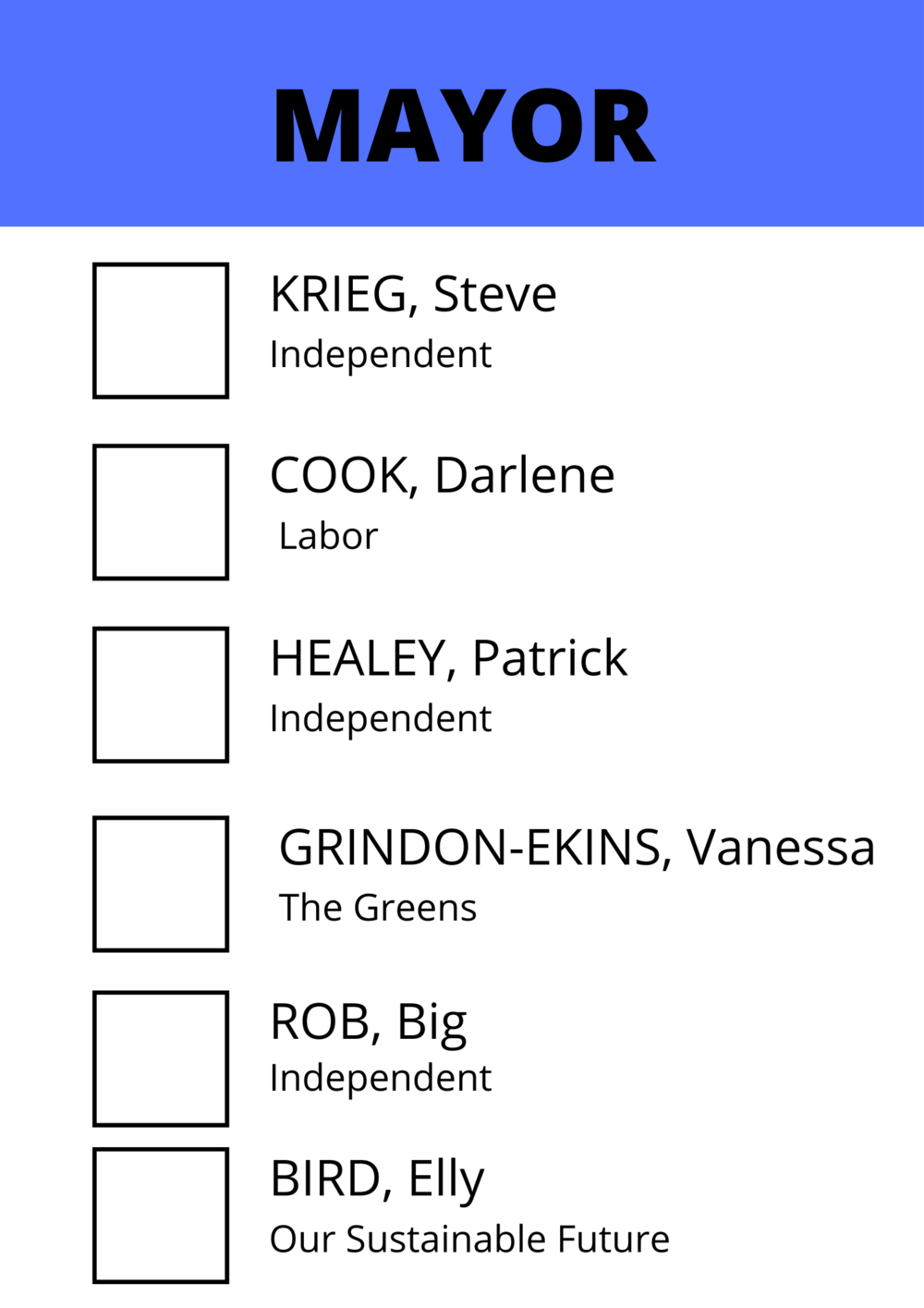Election preferences: what does it mean?
Simon Mumford
21 November 2021, 6:00 AM

Here we are two weeks out from the December 4 Local Council Elections with pre-polling starting tomorrow. The Lismore App is receiving a number of questions about allocating preferences and the impact they have on election results.
We explain how your vote will impact the 2021 Lismore Council Elections.
The Mayoral vote is the simpler of the two explanations.

(This is an example of the voting form, it is not the actual form)
To make a 'formal' vote you need to place at least one mark in one box, this could be a number 1, a √ or an X. The easiest and less confusing way is to use numbers.
You can use any amount of numbers from a single 1 with the rest blank, a 1 and a 2 with the rest blank, a 1, 2 and 3 with the rest blank etc. It is up to you as to how far you would like your preferences to flow.
For Mayor, the number of formal votes was 24,835 in 2012 and 25,900 in 2016. To become mayor a candidate needs an absolute majority so the total divided by 2 plus 1.
In 2012 Jenny Dowel was elected as mayor in the first count with 13,211 votes or 53.19% of the vote. No preferences were needed to determine the mayor.
2016 was a much tighter race.

(Mayoral table with preferences allocated Lismore 2016)
If no candidate reaches the absolute majority after the first count, the lowest count is excluded. In this instance of Big Rob's 806 mayoral votes, 492 were exhausted (meaning no further preferences were distributed). The other 314 votes were spread across Neil Marks (79), Isaac Smith (71), Greg Bennett (56), Vanessa Ekins (54) and Gianpiero Battista (54). The totals are then recalculated.
If a candidate has an absolute majority the counting would stop and the mayor declared. In 2016, preferences were distributed four times until Issac Smith had the absolute majority. It is important to note the number of 'Exhausted Votes' was between 45% and 55% after the lowest candidate was removed. The Formal Vote total at the end of preferences was 19,205 at the end of the process.
The decision you need to make is how many people you want to preference in the Mayoral count.
Electing a Lismore City Councillor is more complex due to the number of candidates you can vote for, in 2021 this equals 46 and the proportional representative system when votes are transferred.
In short, you can vote for a group (A, B, C, D, E, F and G in Lismore) by putting a number in the top line of the voting form. You can stop there or use any combinations of numbers from 1 to 7, one in each box. If you want to use a 1 and a 2 then stop you can, any combination is accepted, you do not have to number every box.
In Lismore, we are electing 10 councillors when each candidate reaches a 'quota' of votes. This is calculated by dividing the aggregate number of first preference candidates by 1 more than the number of councillors needed. So, for 2016 this would be 25,900 divided by 11 which meant the quota was 2,354 votes.
When each candidate reaches that number from a Group they are elected as councillor. The proportional representative system comes into play as a portion of the leftover votes above 2,354 gets distributed to other candidates in that group. Note, it is not a one for one transfer but a percentage (this is too complicated to explain in this story) of the votes that are above 2,354.
The preferences continue until we have 10 councillors elected.
In 2016, Cr Adam Guise was the 10th person to reach the quota so was elected, by 433 votes.
If you are enamoured with one particular group then it is easier to go above the line and put a 1. If you like four groups then put a 1, 2, 3 and 4 into the different boxes above the line. You can leave the rest blank. Your preferences will flow to your group marked '1' until the people in that group are excluded.
If you vote above the line you cannot vote below the line.
If you wish you can number the boxes below the line for each candidate if your favourite people belong in different groups. The NSW Electoral Commission website explains you must number a minimum of 5 boxes. This is determined by at least half the number to be elected (rounded up) so 10 divided by 2 = 5. If you number less than 5 boxes your vote will be declared informal.
If you wish to vote for more than 5, feel free, you can number every box if you wish which would leave you with 46 numbered squares.
If you vote below the line you cannot vote above the line.
Pre-poll voting opens tomorrow at the Lismore Returning Officer's Office at 125 Woodlark Street, Lismore and the Goonellabah Community Centre, 27 Oliver Avenue, Goonellabah between 9am and 5pm.


